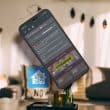When Arlo Baby was first released 3 years ago, it became one of the first three HomeKit cameras on the market. The device came equipped with an impressive number of sensors (motion, audio, air quality, temperature, humidity) and an option to use it in both, battery-mode and plugged-in mode.
I have been using two Arlo Baby cameras in my setup for more than 2.5 years. When I was doing the initial research on baby monitors, I liked that Arlo Baby came from a reputable manufacturer, had a decent mobile app and I would be able to stream outside of my home (most baby monitors do not support that). When Arlo added HomeKit support, I was even more excited, but over time my excitement disappeared. The main issue was that Arlo was just never able to create a stable firmware (a pretty big issue for a device that should monitor your baby, right?) – every update would fix bugs for some users and create several new bugs for other users. You can get a sense of the magnitude of issues from Arlo’s community forum.
Summary
Connectivity issues
My biggest issue with this camera is the poor reliability of streaming. These are just some of the many issues I regularly encounter:
- HomeKit stream goes into black screen after ~10 seconds and restarting the stream is not possible, because the previous stream is stuck and Arlo allows max 1 stream per camera (solution: wait for 30 minutes or perform a hardware restart)
- Arlo app loses signal even though the camera is showing full signal (solution: wait for the camera to reboot itself or perform a hardware restart)
- Cameras shared with someone else do not load (solution: assign the guest admin privileges and try again)
- Arlo app stream pixelates at 1080p resolution despite sufficient bandwidth (solution: switch to 720p)
As you can see, this list is not great and I feel like I am constantly troubleshooting these cameras. In most cases, when the camera becomes unresponsive, the only solution is hardware restart and that is a whole issue on its own. Unplugging is not an option, because the battery will kick in, so you have to unmount the camera, unscrew the bottom cover, toggle the power button, and mount everything back on.
Sensors

Besides connectivity, I had so many issues with the built-in sensors that I just decided to turn them off. The temperature sensor is usually reporting temperature 4-6°F higher (likely a result of the camera overheating) and the air quality sensor randomly spikes to “very unhealthy” and then goes back to “normal”. It is a nice idea to have all of these sensors in one device, but unfortunately, you cannot rely on the readings.
Platform support
SUPPORTED
- HomeKit
- Google Home
- Alexa
- IFTTT
NOT SUPPORTED
- Home Assistant
- Other RSTP or API based platforms
Recording and triggers
When the camera is connected, recording triggers work as expected. The camera comes with the Arlo legacy plan which means you can connect up to 5 cameras for free and have a 7-day history of recorded clips (Note: be careful if your internet plan is capped, each camera can easily upload 50-100 GB of data per month). Recording can be triggered by motion or sound and from my experience works fairly well. There is, unfortunately, no option to store your recording locally or use HomeKit Secure Video, but for it is worth, you can at least secure your Arlo account by 2-factor authentication. The quality of streaming and recording is not bad, but a 2K chip would have been a lot clearer.
Other functionality
Since this is not a standard camera, Arlo included other interesting features:
- You can play lullabies or white noise sounds
- The back of the camera has a multi-colored night light (can be controlled by both Arlo app and HomeKit)
- There is a 2-way talk functionality (also exposed to both Arlo app and HomeKit)
Initially, I thought I will make a lot of use of these features, but in reality, I barely used them. (although, that could have been just my personal use case).
Conclusion

I wanted to like Arlo Baby and it had all the potential to bring more technological innovation in a segment that struggles to innovate. From a hardware perspective, Arlo did a good job – the camera with optional bunny ears blends well into any room, there are hardware buttons on the side to control key functions and the mounting options are compatible with other Arlo cameras. However, the software (and more specifically, the camera firmware) is a frustrating mess. The number one feature for any baby monitor should be reliability and from that perspective, I cannot recommend Arlo Baby to anyone.












Hi Frank – I found your review whilst searching (hoping, praying) for fixes for the issues plaguing our ArloBaby. You’d really think that in the past few years they could have fixed the main ones (for me, connectivity & lag & mediocre HomeKit integration) but I think Arlo just gave up on this.
It’s a real shame – they marketed the hell out of it, but left me (and most others, looking at the forums) feeling like suckers